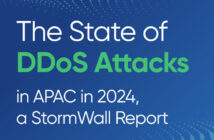Media Release: August 2, 2012 – In response to such trends as rampant growth of mission-critical data, the proliferation of virtualisation and cloud within the data centre, and the erosion of organisational tolerance for downtime, businesses large and small are reprioritising their data protection objectives.
A recent Quest Software survey indicates that nearly three-quarters of organisations now rank restoring critical applications alongside recovering lost data as their top data protection concern. The shift in focus from recovering lost data to restoring critical applications, however, presents a whole new set of backup and recovery challenges.
Quest Software has identified five common application recovery challenges, along with best practices for ensuring the rapid recoverability of these critical assets.
Five challenges of modern application recovery and how to alleviate them
1. Not all applications are the same – applications have varying degrees of value to the business, and must be protected accordingly. For example, the application powering the finance department’s transactional database needs to be held to a stricter service level agreement (SLA) than an application less critical to business operations. This means organisations need to be strategic about setting application recovery objectives. One-size-fits all recovery will not suffice.
The fix: develop a tiered recovery strategy – if all applications aren’t the same, then the recovery strategy assigned to each of those assets shouldn’t be the same. Organisations should align the backup and recovery strategy for a given application with the criticality of that application to the business. The more critical the application, the more aggressive the recovery objective should be.
2. Many critical applications are now virtualised – with virtualisation the norm in most of today’s data centres, a growing number of organisations are virtualising their mission-critical applications. Problematically, many traditional backup solutions only enable image-level backups; so, to recover just a single lost item, admins must restore the entire VM on which an application is running.
The fix: implement application-aware VM backup – organisations should make it a priority to use a VM backup solution that’s truly application-aware and contains a searchable catalog. This will provide the capability to search for specific items, and conduct granular restores. Being able to recover a single Microsoft Exchange mailbox, or even a single attachment, without having to restore the entire VM is critical to meeting aggressive application recovery objectives.
3. Most strategies requires a two-step restore – restoring critical applications is often a two-step, two-person process that can be both arduous and time consuming. In most cases, the backup admin is only capable of restoring the image of the data. The application administrator then needs to reconfigure the underlying application.
The fix: enable role-based access – by providing application administrators with direct visibility into the recoverability of the specific IT services they are responsible for managing, and letting them leverage specialised data protection tools to perform granular backup and recovery tasks, IT can bypass the time-consuming, two-step recovery process that makes restoring applications so challenging with traditional backup strategies.
4. Modern IT infrastructure is fluid – the reality of today’s mixed physical, virtual and cloud environments is that application assets no longer necessarily reside in the same place in the underlying IT infrastructure. Some application assets may reside on a physical server, some may reside on a virtual machine and some may even reside off-premise. Truly restoring an application in this complex environment requires a search of multiple backups, in multiple locations, to collect all the necessary components.
The fix: protect services, not servers – choose a data protection solution that provides the capability to organise, schedule, view and manage backups based on services, rather than servers. This will let admins group all relevant assets associated with a given application, including servers, virtual machines and databases, into an application group against which they can directly set and manage recovery SLAs.
5. Corruptions create vulnerability – many organisations have implemented high-availability, replication-centric solutions designed to protect mission-critical data and applications. However, in the event of a corruption, not only is data replicated, but so, too, is the command or error that caused the corruption in the first place. Without the ability to restore an application to a point in time before a corruption occurred, organisations still are exposed to risk.
The fix: leverage continuous data protection (CDP) – with true CDP solutions such as Quest NetVault® FastRecover, IT can restore critical applications back to any point in time. This provides protection against corruptions that might otherwise wipe out an entire application.
Walter Angerer, senior vice president and general manager, Data Protection, Quest Software, said, “The role of backup and recovery continues to evolve. Administrators are no longer consumed by legacy data protection challenges like breaking the backup window and ensuring the organisation has at least one good copy of its data. Instead, restoring the critical applications that power business and technology services has become the top priority. By investing in application-aware technologies and building a holistic backup and recovery strategy that emphasises the need to quickly restore these critical assets, organisations will be better prepared to meet the data protection challenges of the modern world. ”
###
About Quest Software
Established in 1987, Quest Software (Nasdaq: QSFT) provides simple and innovative IT management solutions that enable more than 100,000 global customers to save time and money across physical and virtual environments. Quest products solve complex IT challenges ranging from database management, data protection, identity and access management, monitoring, user workspace management to Windows management.
Quest, Quest Software, NetVault and the Quest logo are trademarks or registered trademarks of Quest Software in the United States and certain other countries. All other names mentioned herein may be trademarks of their respective owners.





